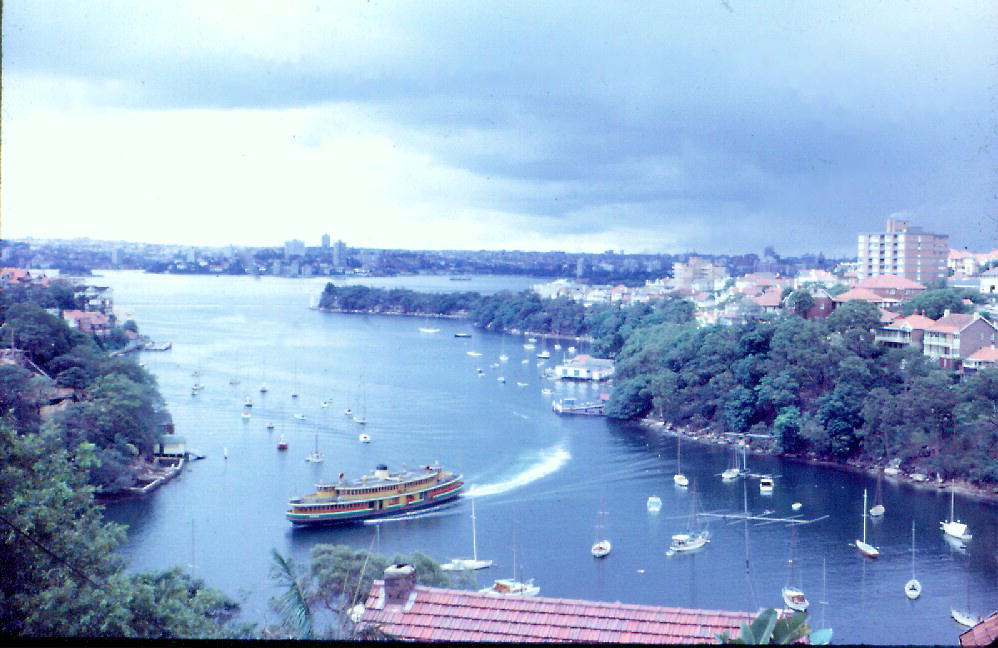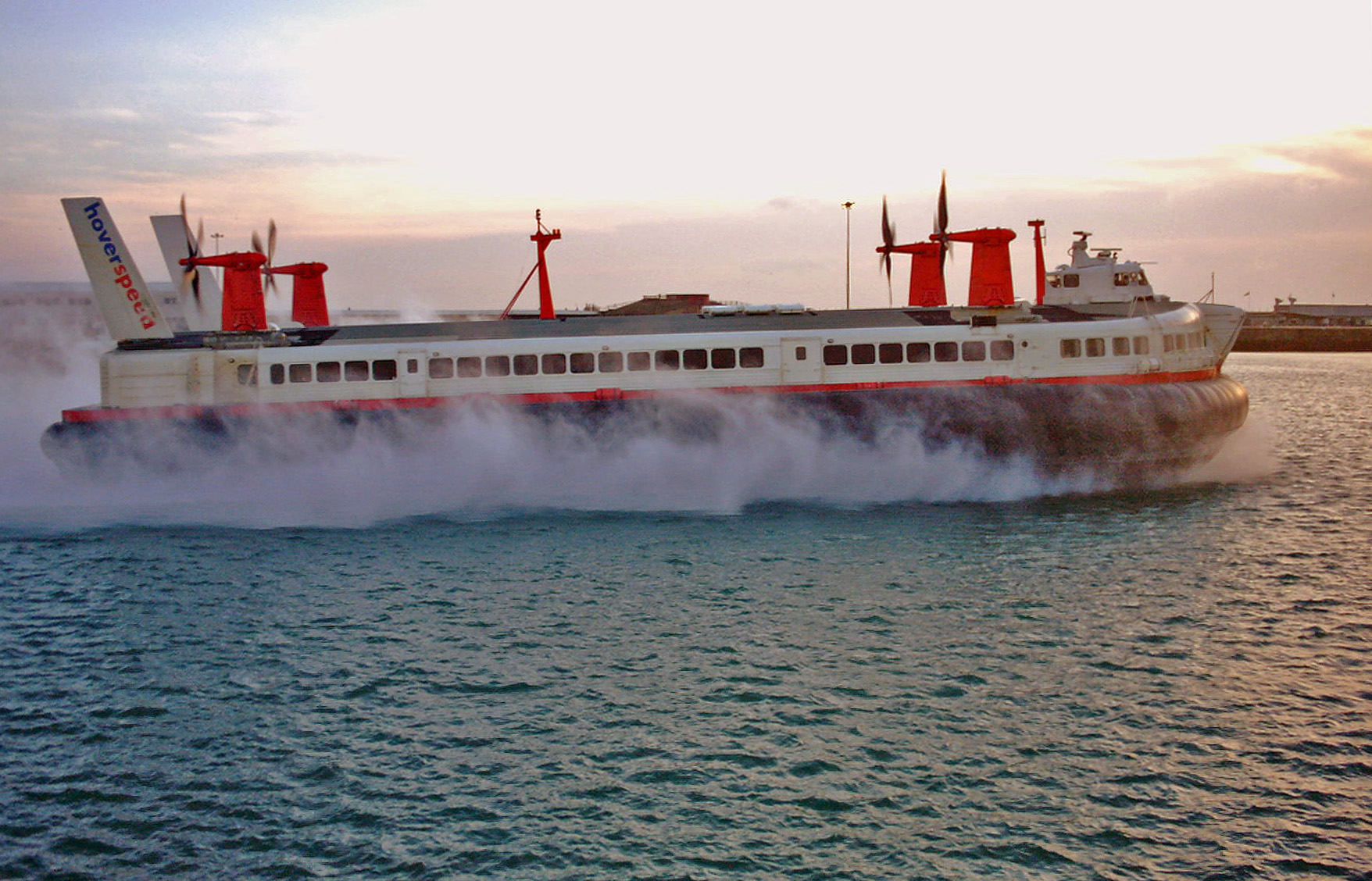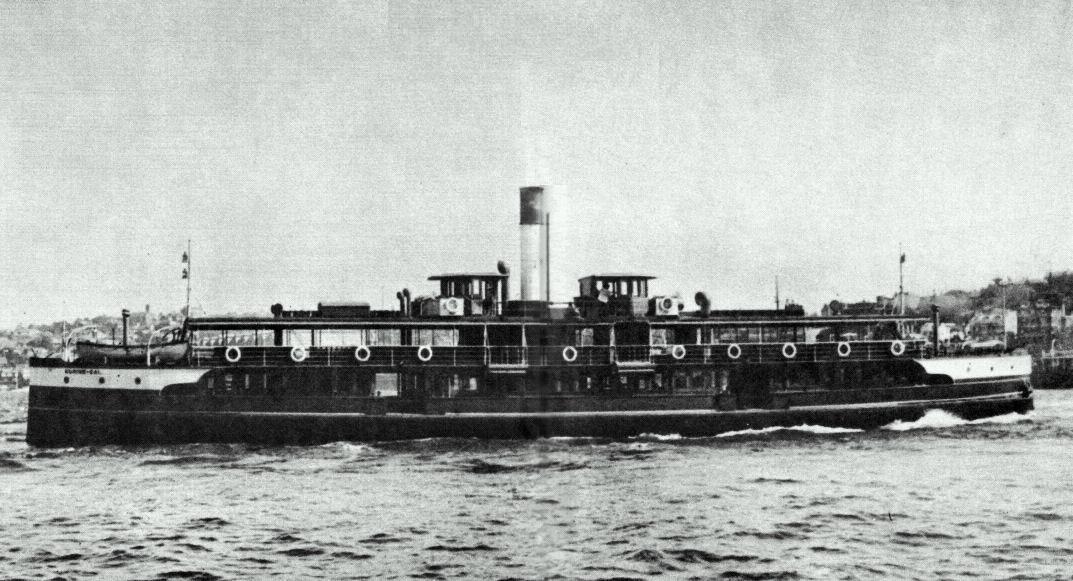|
SS Manly
''Manly'' (II) was a ferry that served on the Sydney to Manly run from 1896 to 1924. Designed by renowned naval architect Walter Reeks, ''Manly'' was the first double-ended screw ferry on the Manly run. She, along with '' Kuring-gai'' (1901), were the archetypes for the long run of Manly ferries for most of the twentieth century. Background In the 1880s, the Port Jackson Steamship Company Limited had been expanding its paddle steamer fleet and services to Manly from Sydney (Circular Quay). Without competition, fares also rose. In response, local interests set up the Manly Co-operative Steam Ferry Limited in 1893 that ran a service with chartered single-ended screw steamers. While a price-war ensued, the new company's smaller and open vessels (''Cygnet'', ''Admiral'', ''Conqueror'', and ''Marramarra'') could not match Port Jackson's larger vessels, which included '' Brighton'', ''Fairlight'', ''Narrabeen''. However, patronage for both companies increased significantly. To entic ... [...More Info...] [...Related Items...] OR: [Wikipedia] [Google] [Baidu] |
Circular Quay
Circular Quay is a harbour, former working port and now international passenger shipping port, public piazza and tourism precinct, heritage area, and transport node located in Sydney, New South Wales, Australia on the northern edge of the Sydney central business district on Sydney Cove, between Bennelong Point and The Rocks. It is part of the local government area of the City of Sydney. The Circular Quay area is a popular neighbourhood for tourism and consists of walkways, pedestrian malls, parks and restaurants. It hosts a number of ferry quays, bus stops, and a railway station. Often referred to as the "gateway to Sydney", the precinct has views of the Sydney Harbour Bridge and the Sydney Opera House and is a common location for viewing Sydney New Year's Eve fireworks. History Indigenous history The Aboriginal name for Circular Quay is ''Warrung'', meaning "Little Child". The first people to occupy the area now known as Sydney were Aboriginal Australians. Radiocarbon da ... [...More Info...] [...Related Items...] OR: [Wikipedia] [Google] [Baidu] |
Mosman Bay
Mosman Bay is a bay of Sydney Harbour adjacent to the suburb of Mosman, 4 km north-east of the Sydney CBD in New South Wales, Australia. Three ferry wharves, Mosman Bay, South Mosman and Old Cremorne, are within the bay, all being served by the F6 Mosman Bay ferry service. History Originally known as Great Sirius Cove, this name lives on in the next bay to the east, Sirius Cove (originally Little Sirius Cove). The bay was originally so named after Governor Arthur Phillip's flagship and only defence of the colony, , which was refitted in the Bay in 1789, the second year of the colony's existence. In 1831, the bay's current namesake, Archibald Mosman, obtained a land grant for the area surrounding the bay. Together with his twin brother George, Mosman founded a whaling station within Mosman Bay. Substantial buildings and stone quaywork were erected. The quaywork remains (incorporated into later seawalls) as does the Old Barn, a sandstone building now used as a Scout ha ... [...More Info...] [...Related Items...] OR: [Wikipedia] [Google] [Baidu] |
Ferries Of Australia
A ferry is a ship, watercraft or amphibious vehicle used to carry passengers, and sometimes vehicles and cargo, across a body of water. A passenger ferry with many stops, such as in Venice, Italy, is sometimes called a water bus or water taxi. Ferries form a part of the public transport systems of many waterside cities and islands, allowing direct transit between points at a capital cost much lower than bridges or tunnels. Ship connections of much larger distances (such as over long distances in water bodies like the Mediterranean Sea) may also be called ferry services, and many carry vehicles. History In ancient times The profession of the ferryman is embodied in Greek mythology in Charon, the boatman who transported souls across the River Styx to the Underworld. Speculation that a pair of oxen propelled a ship having a water wheel can be found in 4th century Roman literature "''Anonymus De Rebus Bellicis''". Though impractical, there is no reason why it could not work ... [...More Info...] [...Related Items...] OR: [Wikipedia] [Google] [Baidu] |
History Of Sydney
The History of Sydney is the story of the peoples of the land that has become modern Sydney. Aboriginal Australians have inhabited the Sydney region for at least 30,000 years, and Aboriginal engravings and cultural sites are common in the Sydney area. The traditional owners of the land on which modern Sydney stands are the Darug, Dharawal and Eora people.The modern history of the city began with the arrival of a First Fleet of British ships in 1788 and the foundation of a penal colony by Great Britain. From 1788 to 1900, Sydney was the capital of the British colony of New South Wales. The town of Sydney was declared a city in 1842, and a local government was established. In 1901, the Australian colonies federated to become the Commonwealth of Australia, and Sydney became the capital of the state of New South Wales. Sydney today is Australia's largest city and a major international centre of culture and finance. The city has played host to numerous international events, inclu ... [...More Info...] [...Related Items...] OR: [Wikipedia] [Google] [Baidu] |
Ferry Transport In Sydney
A ferry is a ship, watercraft or amphibious vehicle used to carry passengers, and sometimes vehicles and cargo, across a body of water. A passenger ferry with many stops, such as in Venice, Italy, is sometimes called a water bus or water taxi. Ferries form a part of the public transport systems of many waterside cities and islands, allowing direct transit between points at a capital cost much lower than bridges or tunnels. Ship connections of much larger distances (such as over long distances in water bodies like the Mediterranean Sea) may also be called ferry services, and many carry vehicles. History In ancient times The profession of the ferryman is embodied in Greek mythology in Charon, the boatman who transported souls across the River Styx to the Underworld. Speculation that a pair of oxen propelled a ship having a water wheel can be found in 4th century Roman literature "''Anonymus De Rebus Bellicis''". Though impractical, there is no reason why it could not work ... [...More Info...] [...Related Items...] OR: [Wikipedia] [Google] [Baidu] |
Berrys Bay
Berrys Bay is a bay located to the east of the Waverton Peninsula and the west of McMahons Point, on the north of Sydney Harbour. A number of ship building firms operate from the bay. History In 2008 the Government of New South Wales called for Expressions of Interest for the private sector to develop a maritime precinct at Berrys Bay. In 2013 Roads & Maritime Services and Government Property NSW entered into an agreement to lease with Pacifica Developments (formerly known as Meridien Marinas) to develop a maritime precinct at this site. No later information is available on this project. In March 2021 Transport for NSW appointed a Berrys Bay Community and Stakeholder Working Group to help shape a fresh vision for this historic Waverton harbourside location. The group was scheduled to meet for the first time in April. In February 2022 ownership of the Qurantine Depot site passed to North Sydney Council. [...More Info...] [...Related Items...] OR: [Wikipedia] [Google] [Baidu] |
Baragoola
MV ''Baragoola'' was a ferry formerly operated by the Port Jackson & Manly Steamship Company and its successors on the Manly service. The sixth and final of the -type Manly ferries, the vessel entered service in 1922. Built with a triple-expansion steam engine, she was converted to diesel-electric propulsion in 1961. Since its decommissioning as a ferry in 1983, the vessel had a number of owners who attempted to find a new role and restore it. In 2003, it was laid up at Balls Head Bay on the north side of Sydney Harbour as attempts to restore the vessel continued. However, in January 2022, she sank at her mooring alongside the Balls Head Coal Loader, with the decision then made that the vessel would be scrapped. ''Baragoola'' is an Australian Aboriginal word for "flood tide". Background The Port Jackson & Manly Steamship Company's fleet transitioned comparatively late to screw-propelled vessels and the fleet comprised mostly paddle steamers until the early years of the twe ... [...More Info...] [...Related Items...] OR: [Wikipedia] [Google] [Baidu] |
Manly–Agnes Collision
The ''Manly''–''Agnes'' collision was a 1904 shipwreck in Sydney Harbour Port Jackson, consisting of the waters of Sydney Harbour, Middle Harbour, North Harbour and the Lane Cove and Parramatta Rivers, is the ria or natural harbour of Sydney, New South Wales, Australia. The harbour is an inlet of the Tasman Sea (p ..., Australia. It involved the 30' launch ''Agnes'' and the steamer which was a much larger passenger ferry. The ''Agnes'' was carrying a family between Snails Bay and Middle Harbour. ''Agnes'' The ''Agnes'' was a launch owned by Frederick Thomas Heming. She had been completed in 1904 by W Holmes of North Sydney, New South Wales and was powered by a 5 hp (3.7 kW) Hercules engine. The collision The collision occurred in the Sydney Harbour on a Sunday. The ''Manly'' ran into the Agnes hitting it near the stern. The Hemings family of six people on board the ''Agnes'' were thrown into the water. Mr. Heming and his wife Agnes drowned - their four children were re ... [...More Info...] [...Related Items...] OR: [Wikipedia] [Google] [Baidu] |
Manly Cove
Manly is a beach-side suburb of northern Sydney, in the state of New South Wales, Australia. It is north-east of the Sydney central business district and is currently one of the three administrative centres of the local government area of Northern Beaches Council. Manly has a long-standing reputation as a tourist destination, owing to its attractive setting on the Pacific Ocean and easy accessibility by ferry. History Manly was named by Captain Arthur Phillip for the Indigenous people living there, stating that "their confidence and manly behaviour made me give the name of Manly Cove to this place". These men were of the Kay-ye-my clan (of the Dharug-speaking Gayemaygal people). While scouting for fresh water in the area, Phillip encountered members of the clan, and after a misunderstanding he was speared in the shoulder by one of the clan as a punishment ritual; the progressively-minded Phillip ordered his men not to retaliate. In Capt. Tench's words, The Aboriginal men wer ... [...More Info...] [...Related Items...] OR: [Wikipedia] [Google] [Baidu] |
PS Brighton
PS ''Brighton'' was a ferry used on the Sydney to Manly run. The biggest Manly ferry at the time and the largest paddle steamer to operate on Sydney Harbour, she was well-appointed and popular with passengers. Background In the late 1800s, the Manly to Circular Quay (Sydney) ferry service was growing, and the Port Jackson Steamboat Company was expanding. In 1878, the double-ended '' Fairlight'' was ordered from England and tug-ferry ''Commodore'' soon followed. Following an 1881 name change to Port Jackson Steamship Company, the ''Brighton'' was ordered. Design and construction The ship was constructed by T.B. Seath & Co. of Rutherglen, Scotland in 1883. She was said to be a copy of the ''Primrose'' and ''Daisy'' which ran on the River Mersey, England. Her paddle wheels were driven by two A. Campbell & Son compound diagonal oscillating steam engines generating 160 hp and then 230 hp in the 1890s. She could reach a speed of 15 knots. She had a summer capacity of 1, ... [...More Info...] [...Related Items...] OR: [Wikipedia] [Google] [Baidu] |
North Head, New South Wales
North Head is an Australian National Heritage listed headland which includes the North Head Quarantine Station and has been symbolically regarded by ships arriving in Australia since 1788 as the entrance to Port Jackson, New South Wales ) , nickname = , image_map = New South Wales in Australia.svg , map_caption = Location of New South Wales in AustraliaCoordinates: , subdivision_type = Country , subdivision_name = Australia , established_title = Before federation , es ... References Headlands of New South Wales {{Sydney-geo-stub ... [...More Info...] [...Related Items...] OR: [Wikipedia] [Google] [Baidu] |
South Head, New South Wales
South is one of the cardinal directions or compass points. The direction is the opposite of north and is perpendicular to both east and west. Etymology The word ''south'' comes from Old English ''sūþ'', from earlier Proto-Germanic ''*sunþaz'' ("south"), possibly related to the same Proto-Indo-European root that the word ''sun'' derived from. Some languages describe south in the same way, from the fact that it is the direction of the sun at noon (in the Northern Hemisphere), like Latin meridies 'noon, south' (from medius 'middle' + dies 'day', cf English meridional), while others describe south as the right-hand side of the rising sun, like Biblical Hebrew תֵּימָן teiman 'south' from יָמִין yamin 'right', Aramaic תַּימנַא taymna from יָמִין yamin 'right' and Syriac ܬܰܝܡܢܳܐ taymna from ܝܰܡܝܺܢܳܐ yamina (hence the name of Yemen, the land to the south/right of the Levant). Navigation By convention, the ''bottom or down-facing side'' of a ... [...More Info...] [...Related Items...] OR: [Wikipedia] [Google] [Baidu] |








